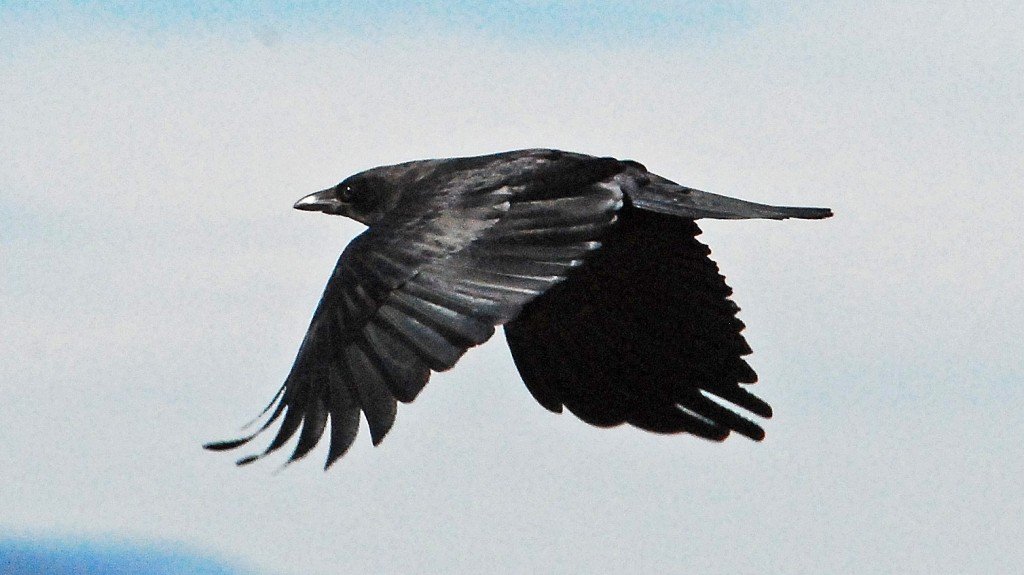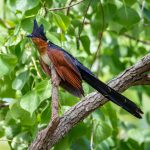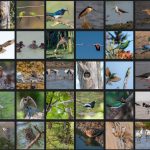My dad says he can call a Fish Crow from an American Crow on sight. I’m not entirely inclined to disbelieve him, but I’ve always had trouble differentiating the two common, often equally so, Corvids of the Southeast. There are more than a few places in the world where two species of Crows can be found side-by-side, as weird as it seems that two birds that seem to fill the exact same gregarious, opportunistic niche can exist together, but rarely do they seem so identical as the two that share space across the Gulf Coast east of Texas all the way north to New England.
In one corner, the American Crow, Corvus brachyrynchos. Trickster god of Native Americans and friend of witches. Arbiter of point-to-point distance and garbage sentinel. Both omen of bad tidings and beloved pet. Ranging across nearly the entirety of North American in almost every habitat, American Crows are easy to find, easy to identify, and easy to disregard as one of the most common birds on the continent. No one gives them a whole lot of thought, though the Crows themselves are found to be capable of quite a lot. They eat anything and everything, form large and loud flocks, and can clean out a suet cage in seconds.
In the other corner, the scion of the southeast. Fish Crow, Corvus ossifragus, which literally and awesomely translates to “Bone-breaker Crow”. Smaller, slighter, more drawn towards water and possessed of a nasally, croaky froggish voice that immediately identifies it should it deign to call. Fortunately for us in the zone of overlap, crows call a lot. There are places you can be sure you’re finding Fish rather than American to be sure. The beach, for instance, is nearly all Fish Crow and most large reservoirs in the area can be majority Fish Crow spots as per their preference for wet places. That’s not a hard or fast rule and many birders, myself included, are generally only comfortable calling the birds when they’re calling birds. It’s definitely easier that way, and given the crow-heaviness of any individual outing in the Southeast, you could spend the entire day trying to pick out each and every non-vocal Corvid that happens by. And let’s be honest, no one wants to do that.
But there are those, like my dad, that claim to be able to pick out a Fish from an American on sight – no cawing required – just be “feeling” out the crow. There’s some truth to that, as Fish Crows are generally 85% of an American Crow, but that 15% can be difficult to ascertain in regular field conditions. It manifests in subtle differences in wing and tail length, the sort of thing a birder could probably get comfortable with over a long period of time watching hundreds or, more likely, thousands of Crows. The bill is slightly slimmer, as well, and the legs are shorter. Nothing too obvious, but enough to offer a difference in profile of the sort that skilled birders can pick up on. I can say in my experience this is the sort of thing that is more obvious in some birds than others. Still, it makes the numbers of “crow sp.” on your list that much smaller.
A better way, and I mean that relative to sending anyone out with rulers and magnifying glasses, was one I discovered in an old ABA online photo quiz. It requires a good look at the bird’s wings, which isn’t too much to ask considering the lazy slow flaps both crows employ to get from one place to another. I’ll copy the whole thing here in case I butcher it:
What we need do is study the wing formulae of the two birds. American Crow has more fingers — and longer fingers — than does Fish Crow (‘fingers’ being outer primaries, the tips of which are visibly separate from their neighbors on the spread wing, not cheek-to-jowl like the inner primaries and secondaries). Knowing that crows have ten primaries (as do all of the first half (or so) of the passerines) and counting backward from the outermost primary (primary #10; p10), one can see that p5 is just a bit shorter than is p6 and is just longer than, and with its tip nearly adjacent to (that is, not all that separate from), p4.
Got it? In my experience this is still a difficult-ish thing to judge in the field as counting primaries on a flying bird, even one as lackadaisical as a crow, is no easy task. But it does work given an accommodating Crow, or even some photos. So, looking back are you able to ID the two crows photographed here?
My dad probably did, or so he says.














One reason I consider a relatively inexpensive camera with a long zoom to be a great field ID tool when learning birds. The picture doesn’t have to be high quality. Even a fuzzy out-of-focus piece-of-crap photo can capture the one field mark you failed to observe before getting back to your guide. I use this with shorebirds and hawks to look at general shape a lot.
I had never heard the “fingers” ID tip. Before West Nile virus, there were lots of crows in my area, both Am. and Fish. I noticed that when a flock of crows flew over, if the group was quite high above the trees, they turned out to be Fish Crows. If they were not far above tree tops, they were almost always American–I identified them by call.
American Crow above, Fish Crow below. If I am right, I’ll comment further. If I am wrong, I’ll claim my right to remain silent.